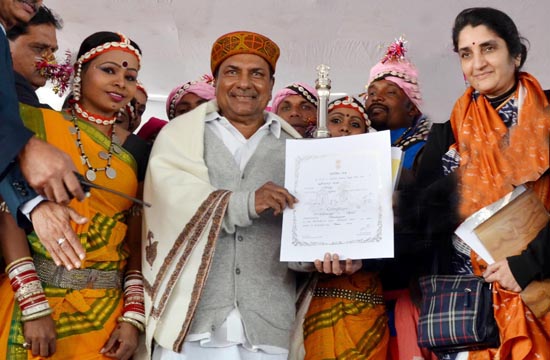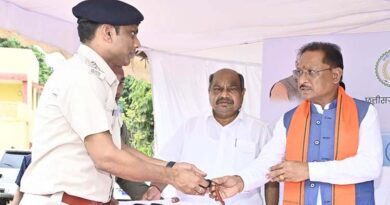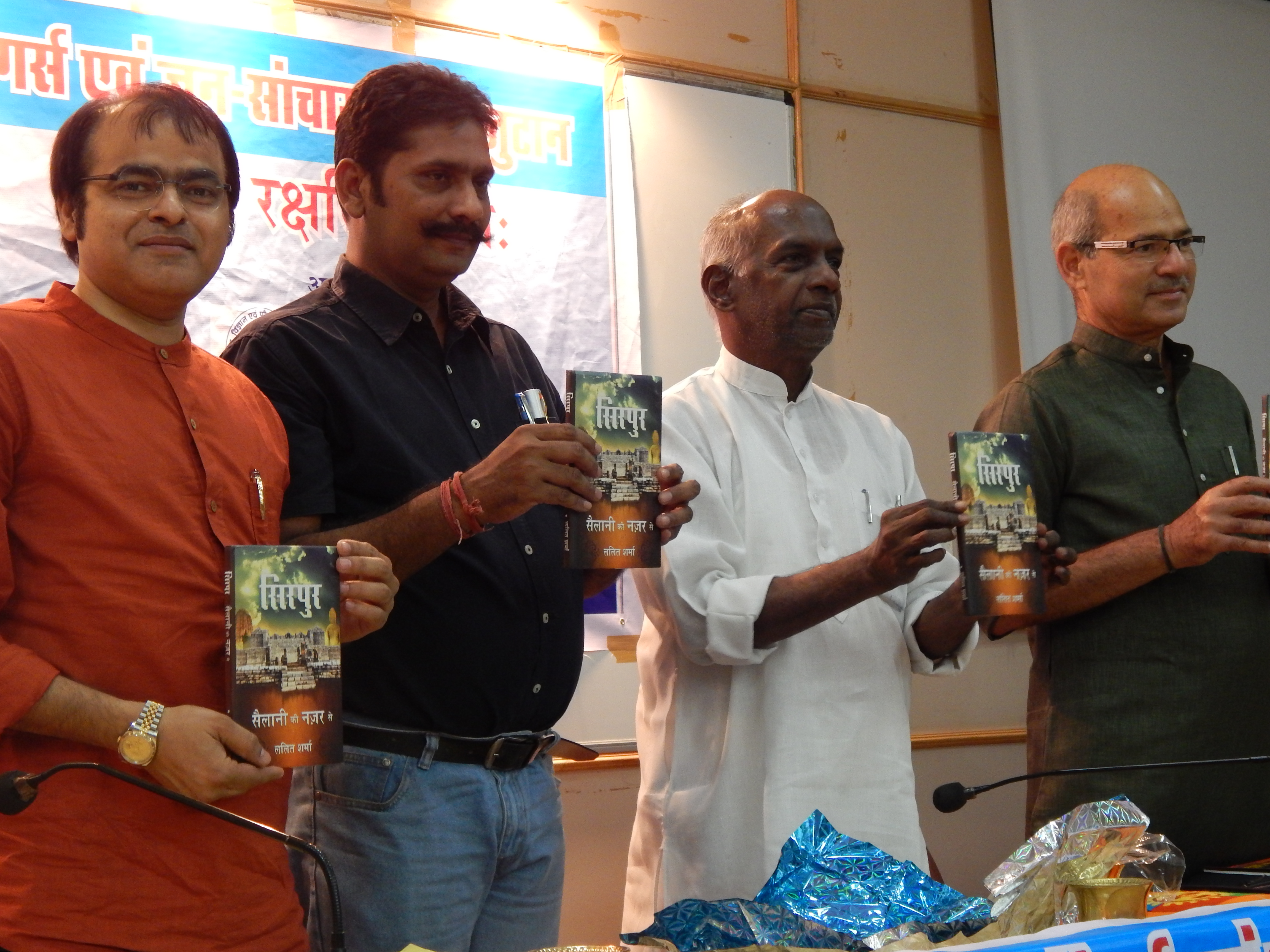Defence Minister gives third ‘Best tableau’ award to Chhattisgarh
New Delhi, February 1, 2013: The Chhattisgarh government was today conferred the third prize for its state tableau depicting the historical site ‘Sirpur’ in 64th Republic Day parade. Chhattisgarh Resident Commissioner B V Uma Devi received the award from Defence Minister A K Antony on behalf of the state government at a function held at the Rashtriya Rangshala Camp here.
In all 19 tableaux – 14 from States and 5 from various government ministries and department participated in the ceremonial parade on Rajpath. The floats of Kerala and Rajasthan bagged the first and second prizes respectively in the best tableau category.
Chief Minister Dr Raman Singh congratulated the department and appreciated the hard work put in by officials and staff of the department. Chief Secretary Sunil Kumar, Public Relations Department Principal Secretary N Baijendra Kumar and Director Sonmoni Borah also congratulated the department for the achievement. A team of artisans and officials of the Chhattisgarh Public Relations Department had worked round-the-clock at the site for one month for the final rollout after the tableau was selected for the Republic Day parade. The department took the decision as per wish of Chief Minister Raman Singh to showcase the State’s prized heritage site ‘Sirpur’ as the theme for this year’s tableau for Republic Day so that the significance of the historical and cultural site could be known to a global audience. The concept was finalized after consultations with archaeologist and excavator Arun Kumar Sharma, who is archaeological advisor to the Chhattisgarh government.
Chhattisgarh had won awards in ‘best tableau’ category on two occasions. In 2006, the state bagged the first prize for its tableau on the theme ‘traditional jewellery’ and in 2010 it won the third prize for depicting ‘Kutumbsar caves’. This was for the fourth time that the state tableau participated in the Republic Day parade. Last year, ‘Jhinjhari and Dondaki art’ of Chhattisgarh was displayed at the parade. Sirpur, situated on the banks of Mahanadi River, was called ‘Sirpura’ in ancient times. The history of Sirpur has been full of cultural prosperity, architectural expertise and religious tolerance. The excavations at Sirpur led to the discovery of a rare treasure of ancient heritage. From King’s palace to numerous Siva and Vishnu temples, Buddha and Jaina Viharas to large dwelling houses for all classes, Sirpur has an endless list of excavated sites. The remains found at Sirpur revealed that it was also the world’s biggest trade centre. Graineries are testimony to it being a significant trade hub from 6th century BC. Ashok stupa and Ayurvedic bathing areas were found during excavation.
Most of the temples, buildings and residential areas were constructed during the reign of King Triverdev to Mahashivgupt Balarjun when the social, economic and cultural pride of the region was at its peak and people of all sects lived a peaceful and prosperous life. During the period, there were 10,000 monks studying in 100 ‘Sangharams’. The then King, Mahashivgupt Balarjun was a Shaivite, but sects like Buddhist, Jain and Vaishnav also flourished during his rule.
During the excavations at Sirpur, remains of 17 Shiva temples, 8 Buddha viharas, 3 Jain vihars, a sprawling palace complex, a chieftain’s residence, six residences of priests and an elaborately planned trade centre was found. Even the famed Chinese traveller Hyun Tsang arrived in Sirpur in 639 BC after learning about its fame and later described the place as a city of religious tolerance, vihars and temples. A total of 79 bronze idols, seals from Indus valley civilization and silver coins belonging to Shahjahan and Aurangzeb period were also found during excavations at Sirpur.




